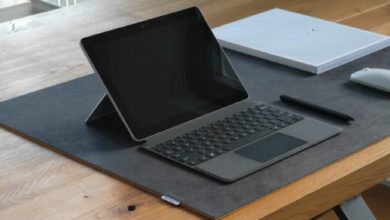How to Choose the Right TV for Your Home Theater Setup

Home theaters are complicated beasts, with a dizzying array of options. However, choosing the right television is often the most daunting (and expensive) part of building your home theater setup. This guide outlines the key factors to consider when choosing the best TV for home theater setups.
1. Determine the Best TV Size for the Room
When looking for the best TV for home theater setups, your TV’s display size impacts your viewing experience the most. The bigger the screen size, the better you’ll see the details in today’s hi-res content. A bigger TV also makes it possible for more family members to have a comfortable and enjoyable viewing experience.
Modern TVs come in a variety of sizes, and you can buy them as small as 32 inches and as large as 100 inches. This single diagonal screen measurement measures your TV’s display size. Based on price, performance, and typical room setups, the most common screen size for today’s TVs is 55 inches.
For most people, the sweet spot lies between 50 and 65 inches. Less than that leads to a less-than-stellar viewing, while larger televisions cost far too much. Moreover, an enormous TV may not be the right choice, unless you have a huge room or a mini theater.
Good to know: if you plan to play video games with your home theater setup, check out the best gaming consoles you can buy.
2. Determine the Viewing Distance
Viewing distance is an important factor to consider when selecting the best TV for home theater setups, as it directly impacts your viewing experience and overall enjoyment. You can save a lot of money by simply placing your couch closer to the display, since high-resolution images require you to sit an optimum distance from the screen.
The very point of a large display is to fill your field of vision for the ultimate cinematic experience. You can achieve this effect by determining the best distance from the screen based on its size, pixel density, and resolution. Alternatively, you can determine the best furniture placement that will fit the room and use that data to decide the best television size for your home theater.
We recommend using the viewing distance calculator to calculate the THX-recommended (36-degree viewing angle) display size. Punch in your desired viewing distance, and select the TV resolution you’re considering. Conversely, figuring out the viewing distance for a display of a known size is as easy as switching to the tab for calculating viewing distance and entering the TV size.
3. Understand Available Display Types
Display, or panel, types remain diverse but need to be decided when selecting the best TV for home theater plans. Depending on your budget and what you want in terms of performance, choose between LED, QLED, Mini-LED, and OLED.
An LED TV is the same old LCD TV, except the LCD panel is backlit by LEDs instead of relatively bulky CCFL tubes. LED TVs can either be edge-lit or direct-lit, based on their backlight. Despite their benefits, LED displays suffer from poor contrast, backlight bleeding, and inferior HDR performance.
QLED technology (Quantum Dot LED) attempts to improve on the drawbacks of conventional LED TVs by adding a quantum dot filter built into the panel. This layer improves overall picture quality by enhancing the color accuracy, contrast, and brightness of the screen. QLED TVs were popularized by Samsung, leading to the moniker being adopted by other manufacturers as well.
Mini-LED displays are a relatively recent development in display technology and further improve on QLED technology. Mini-LED reduces the size of individual LEDs to allow for better local dimming, allowing superior contrast and brightness. Many Mini-LED TVs cost more than $1000 but offer great improvements in picture quality compared to regular LED TVs.
Finally, OLED TVs do not require a separate backlight to illuminate the screen. Instead, each pixel emits its own light, allowing for individually controlled pixels. Although the brightness of OLED still lags behind many QLED and Mini-LED TVs, OLEDs have extremely fast response times, wide viewing angles, and better color accuracy.
Also helpful: When setting up a home theater in your backyard, consider an outdoor TV display.
4. Choose a Screen Resolution
The screen resolution of your TV is the number of horizontal and vertical pixels across the display. The higher the resolution, the more pixels are packed into your display, and the sharper and better-looking the picture quality. Modern TVs have resolutions of 1080p (1920 x 1080), 4K (3840 x 2160), and 8K (7680 x 4320).
While you may find other resolutions, 4K TVs are the most popular choice today. 4K streaming has become more prevalent, and you can find 4K televisions for $500 or less. Meanwhile, 8K televisions are still very expensive and not practical for most consumers.
5. Evaluate Connectivity and Features
When spending big bucks on a new TV, panel type and screen size shouldn’t be your only considerations. The best TVs for home theater setups also have a variety of connectivity types and features.
When selecting a television, pick something with a refresh rate of 120 Hz or higher, Dolby Vision and HDR10, an intuitive operating system, Dolby Atmos or Dolby Digital, and more. Even many of today’s budget TVs from TCL and Hisense are offering these features and much more at competitive prices.
Regarding connectivity, you should buy a TV with multiple HDMI 2.1 ports, dual-band Wi-Fi, Ethernet, Bluetooth, eARC, and enough USB ports for your needs.
Tip: if you’re buying a TV for console gaming, you should ideally look at only the best 4K gaming TVs. They should offer dedicated specs and features suited to high-refresh gaming on your PS5 or Xbox Series S/X.
6. Stick to a Budget
Although you want the best TV for home theaters, you should always choose a display that offers the most value for the money. You must balance your expectations and budget to choose the best TV for you. But, thankfully, today’s budget and mid-range TVs have become quite affordable and offer a great combination of picture quality, features, specifications, and price.
In fact, you don’t even need to look at relatively newer brands if you don’t want to. You can buy a decent 55-inch Samsung LED TV for around $500, and a QLED one for about $800. Naturally, OLED and Mini-LED TVs will cost more, and brands like Sony don’t really offer “budget TVs.” But, if you do some research, you can find 55-inch mini-LED TVs from LG for around $650.
It’s Time to Build a Home Theater
Selecting the best TV for home theater setups is not an easy task. However, you can easily find a great display by following this guide to buying the right TV.
Once you have the television picked out, it’s time to consider whether you want a soundbar or speaker system and a Blu-ray player or Roku device.
Image credit: Unsplash
Subscribe to our newsletter!
Our latest tutorials delivered straight to your inbox




